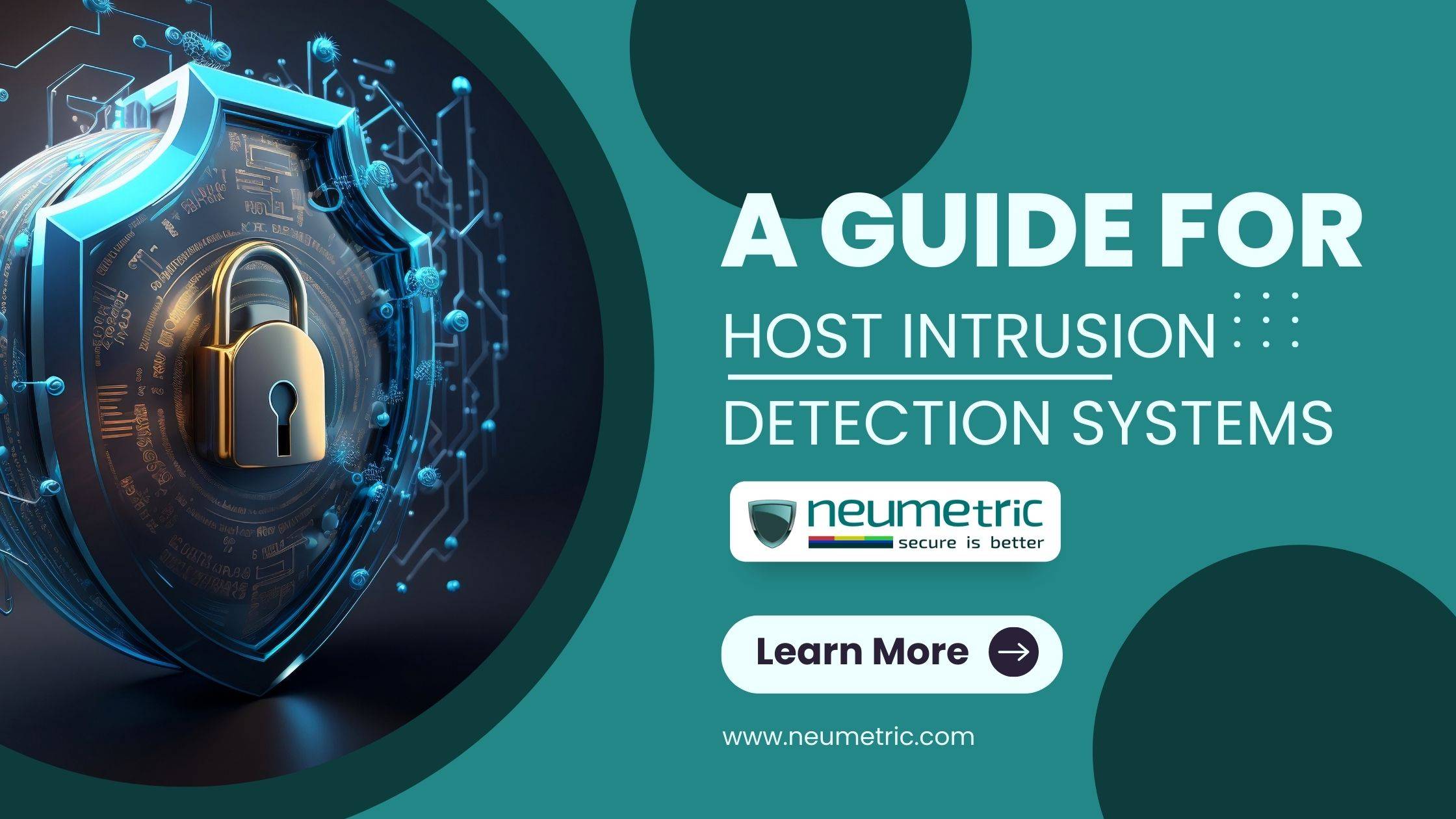Table of Contents
ToggleIntroduction
As cyberthreats advance, securing endpoints is imperative, since compromising just one device provides access to the broader infrastructure. Endpoint security is now critical for defence. Host-based Intrusion Detection Systems [HIDS] are key for endpoint protection by continuously monitoring device activities to identify threats in real-time that may bypass traditional defences. The inward visibility of HIDS detects evasive threats.
This Journal provides an in-depth look at HIDS. It defines HIDS & contrasts it with other tools, explains its detection techniques, architecture, key benefits, features & use cases. The Journal covers selecting, deploying, configuring & integrating HIDS, along with managing false positives, performance impacts & ongoing tuning best practices. Real-world examples demonstrate HIDS value in improving security.
The goal of this Journal is to help readers understand what Host Intrusion Detection Systems are, how they work, their benefits & limitations & best practices for implementation. Whether you are new to HIDS or looking to optimise existing usage, this Journal provides comprehensive coverage to incorporate HIDS into robust endpoint defences. Keep reading for an in-depth exploration of utilising host intrusion detection for enhanced threat visibility & response.
What is a Host Intrusion Detection System?
A Host Intrusion Detection System [HIDS] is software on an endpoint that monitors activity continuously in real-time to detect malicious, anomalous, or policy-violating behaviour locally. Unlike Network Intrusion Detection System [NIDS], it analyses events inwardly on the host itself rather than examining external network traffic.
The core principles of HIDS include real-time activity monitoring, malicious behaviour detection & rapid response through notifications & active blocking. HIDS solutions utilise techniques like file integrity monitoring, log inspection, analytics, heuristics & signatures to identify intrusions.
HIDS plays a critical role in endpoint security strategies by acting as the last line of defence right at the host level. It detects & responds to threats that may evade other protections like firewalls, network security, anti-virus & more. HIDS provides visibility into granular host activities often missed by other tools.
Unlike firewalls that filter network traffic & antivirus that scans files & processes, HIDS directly monitors events within the operating system kernel, critical system files, memory, registry & more for detailed host activity analysis. This allows detection of advanced malware, insider misuse, policy violations & sophisticated techniques that bypass traditional defences.
How Host Intrusion Detection Systems work
- Components & architecture of HIDS: HIDS architecture has integrated modules for data collection, detection, verification, notifications & management. The data engine gathers real-time system activity. The detection engine analyses the data using behavioural analysis, signatures, heuristics & machine learning to identify intrusions. The verification engine minimises false positives before alerting. The management console enables control over rules, configurations, updates & access.
- Detection techniques & mechanisms employed by HIDS: HIDS uses various detection techniques:
- Signature-based: Matches activity to known attack patterns, like antivirus. Signatures are updated for new threats.
- Behavioural anomaly: Profiles normal behaviour, flags deviations as potential threats.
- Heuristic analysis: Identifies suspicious activity based on hacker Tactics, Techniques & Procedures [TTPs].
- File integrity monitoring: Detects changes to critical system files.
- Log analysis: Inspects system logs for suspicious patterns & violations.
- Real-time monitoring & analysis of host activities: The key advantage of HIDS is its continuous real-time monitoring & analysis of granular host activities that may go unnoticed by other tools. This enables early detection of threats even before damage is done or data exfiltrated. HIDS remains constantly vigilant for signs of intrusion as the host operates.
Benefits of Host Intrusion Detection Systems
- Early detection & response to potential intrusions: The key HIDS benefit is detecting intrusions extremely early, often during initial access. Continuous monitoring & alerting at the first sign of compromise enables rapid response before major damage. Compared to waiting for substantial lateral movement & exfiltration, early detection allows quicker containment by isolating infected hosts & removing access prior to business disruption.
- Enhanced visibility into detailed host-level activities: HIDS provides much deeper visibility into detailed host-level events compared to network defences. Network tools cannot directly inspect activity within operating systems, system services, memory, registries, files & other host internals where advanced threats operate. This granular telemetry enriches monitoring with critical context. Analysts gain insights into processes & user activities across hosts to identify compromised pivot points, insider misuse, data exfiltration & attacker tactics.
- Reduction of false positives & improved detection accuracy: HIDS typically provides more accurate detection & fewer false positives than network-centric monitoring. By using multiple techniques focused on individual hosts, HIDS improves accuracy & avoids misinterpretations caused by examining aggregate traffic. The tailored host-level analysis reduces noise & false positives, letting teams prioritise high-fidelity alerts.
Common features & capabilities of HIDS
- File integrity monitoring & system file protection: A core HIDS capability is file integrity monitoring, which tracks system, application & config files for unauthorised changes. By baselining file hashes/attributes & monitoring for deviations, HIDS detects corruption or malicious modification of critical binaries, libraries, executables, etc. Stored trusted hashes easily identify changes. File monitoring ensures the host stays uncompromised & stable, protecting the foundation of security.
- Log analysis & anomaly detection: HIDS performs extensive real-time log analysis to uncover malicious patterns. System logs record detailed memory, network, application, authentication, process, registry & file events. Combined with anomaly detection, log analysis identifies subtle malicious activities that sophisticated attacks try slipping under the radar. Continuous log inspection is key to detect stealthy threats.
- Behavioural analysis & heuristics: HIDS establishes normal host behaviour baselines via statistical modelling of system/user activities. Deviations raise anomalies for investigation. Heuristics codify rules recognizing known attacker behaviours to detect unknown threats lacking signatures. Combined behaviour profiling & heuristics close gaps exploited by zero-days, insider abuse & custom malware by identifying human attack tactics, techniques & procedures.
Deploying & configuring a Host Intrusion Detection System
- Considerations for selecting the right HIDS solution: The most important criteria when selecting an HIDS platform include:
- Minimum performance impact & resource consumption
- High detection accuracy with low false positive rates
- Intuitive & user-friendly management console
- Flexible alerting with customizable thresholds & response actions
- APIs & integrations with existing security infrastructure
- Processes supporting continuous signature & policy tuning
Organisations should evaluate both commercial & open source options to determine the best fit based on internal skill sets & requirements.
- Installation & setup best practices
Following best practices during HIDS installation & initial configuration leads to smoother deployment. Recommendations include:
- Test HIDS on non-critical endpoints first to tune rules before broad rollout
- Enable only minimal, performance-optimised detection policies initially
- Integrate alerts & dashboards into central security analytics & workflows
- Gradually increase detection scope & sophistication post-deployment
- Balance monitoring breadth with potential resource impacts
Properly tuning the initial HIDS configuration is key to balancing detection coverage & system performance.
- Configuring alerts, notifications & response actions
Effective HIDS alerting is crucial & requires prioritising high-fidelity alerts, minimising false positives, customising thresholds by asset criticality, integrating into Security Information & Event Management [SIEM] workflows, enabling automated containment & prompt alert handling. Well-tuned alerting & SIEM integration optimises incident response.
Integration with other security systems
HIDS uniquely monitors inwardly at the host level, providing visibility traditional controls lack. Integrating HIDS complements other systems like anti-virus, firewalls & network IDS which defend the perimeter but can’t see inside hosts. Ingesting HIDS alerts into a centralised SIEM unifies host & network visibility to boost monitoring & the overall security ecosystem.
Integrating HIDS into SIEM workflows correlates host & network threat detection for unified visibility & investigation. SIEM correlation uncovers threats missed when systems work in silos. The host visibility from HIDS combined with the network view from SIEM provides full coverage. Integrating HIDS data enhances monitoring efficacy.
HIDS & NIDS offer complementary host & network visibility. NIDS catches malicious traffic missed by HIDS, while HIDS spots compromised hosts sending the malicious traffic. Their combined perspectives provide full coverage to identify sophisticated threats that evade individual detection. Working together, HIDS & NIDS enable robust threat detection.
Challenges & limitations of HIDS
HIDS is prone to false positives & negatives. Misconfigured systems trigger excessive alerts responding to benign activity, causing fatigue. Tuning rules minimises this. False negatives failing to detect real intrusions are dangerous. Regular signature & behavioural model updates avoid missed detections as threats change. Balancing low false positives & negatives is an ongoing challenge.
HIDS monitoring incurs resource usage that can degrade host performance. Impacts must be managed via baseline rule tuning & optimised configurations, especially for critical servers. Excessive logging & analysis can lag even robust hosts if HIDS lacks efficiency. Lean data collection, pre-filtering & sampling minimise performance hits.
Sophisticated attacks use evasion tactics like custom malware, low-noise techniques, disguising activity & altering behaviour mid-attack. Although advanced attackers exploit HIDS weaknesses, using it in a defence-in-depth strategy with multiple controls protects against circumvention, since no single security tool catches everything.
Best practices for effective HIDS implementation
The HIDS signature database enables accurate detection, so it requires continuous updates as new attacks emerge. Regular signature refreshes from threat intelligence ensure detection keeps up with the evolving landscape. Daily or weekly updates should be deployed promptly after testing. Pruning obsolete signatures & keeping the database current reduces false negatives & maintains high detection efficacy.
HIDS rules & policies need constant tuning to adapt to changing hosts, applications, traffic & behaviours across the enterprise. Monitoring rule triggers, detections & false positives guides optimal adjustments. Tuning helps optimise thresholds, improve noise reduction, exclude non-suspicious detections, expand suspicious activity monitoring & balance performance impact vs detection breadth. This process accounts for changes over time.
In addition to continuous tuning, formal periodic assessments via audits, penetration testing & red team exercises validate HIDS efficacy & identify gaps. Internal audits assess alert handling workflows, rules validation, team efficiency metrics & more. Penetration testing evaluates detection capabilities against new attack techniques. Red team drills simulate real-world attacks. Any deficiencies found are addressed through policy changes, coverage improvements & capability expansion.
Case Studies & Real-World Examples
Organisations in finance, healthcare, e-commerce, government & other sectors have experienced measurable security improvements from deploying HIDS integrated with their controls stack. They report catching intruders faster thanks to HIDE early detections. Damaging breaches have been thwarted. Compliance audit pass rates have increased. Mean time to containment for confirmed threats has reduced from days to hours in some cases. These real-world examples showcase HIDS value.
Analysis of major malware like Stuxnet & real-world attacks illustrate that neither network nor host-level defences alone get the full picture. Combining NIDS & HIDS data provides interconnected visibility that improves threat detection. HIDS has proven invaluable for rapid incident response & post-breach forensic analysis to trace malware propagation after major attacks. It identifies ground zero & compromised endpoints used as pivot points. HIDS alerts during major incidents provide an essential puzzle piece to understand what happened.
Conclusion
This Journal has provided a comprehensive overview of Host-based Intrusion Detection Systems, including their capabilities, inner workings, benefits, deployment best practices & real-world value. We discussed how HIDS provides in-depth visibility into host activities, detects threats through advanced techniques like behavioural analysis & heuristics & enables rapid incident response.
Robust HIDS implementations integrated into endpoint security stacks have proven highly effective at catching threats early & reducing breaches across industry sectors. As cyberattacks grow more advanced & evasive, HIDS plays an increasingly critical role in securing endpoints by monitoring for malicious activity within hosts themselves.
Bolstering endpoint defences should be a priority for all organisations. Evaluating & piloting HIDS solutions is encouraged, even if you already utilise anti-virus, firewalls & network threat detection. HIDS is a force multiplier that works hand-in-hand with these controls to provide comprehensive monitoring, investigation capabilities & protection against modern attacks. The insights provided in this Journal equip you with the knowledge to determine where HIDS can strengthen your organisation’s security posture.
FAQs
What is a Host-based Intrusion Detection System?
A Host-based Intrusion Detection System [HIDS] is a software program installed on an individual computer, server, or other device that monitors activity & events occurring locally on that host for signs of malicious, suspicious, or policy-violating behaviour.
What is the use of HIDS?
HIDS is used to detect intrusions & threats on individual hosts that may bypass traditional network defences. It provides detailed visibility into host-level events & system internals. HIDS alerts security teams to investigate & respond to early signs of compromise.
What is difference between NIDS & HIDS?
Network Intrusion Detection Systems [NIDS] analyse network traffic from a perimeter viewpoint, while Host-based IDS analyses events internally on each individual host. NIDS has wide network visibility but lacks host context, whereas HIDS sees detailed host activities but lacks network visibility.
What is an example of a Host Intrusion Prevention System?
An example of a Host-based Intrusion Prevention System is McAfee Host Intrusion Prevention. It combines intrusion detection with active prevention capabilities to automatically block detected threats on hosts before damage occurs.





